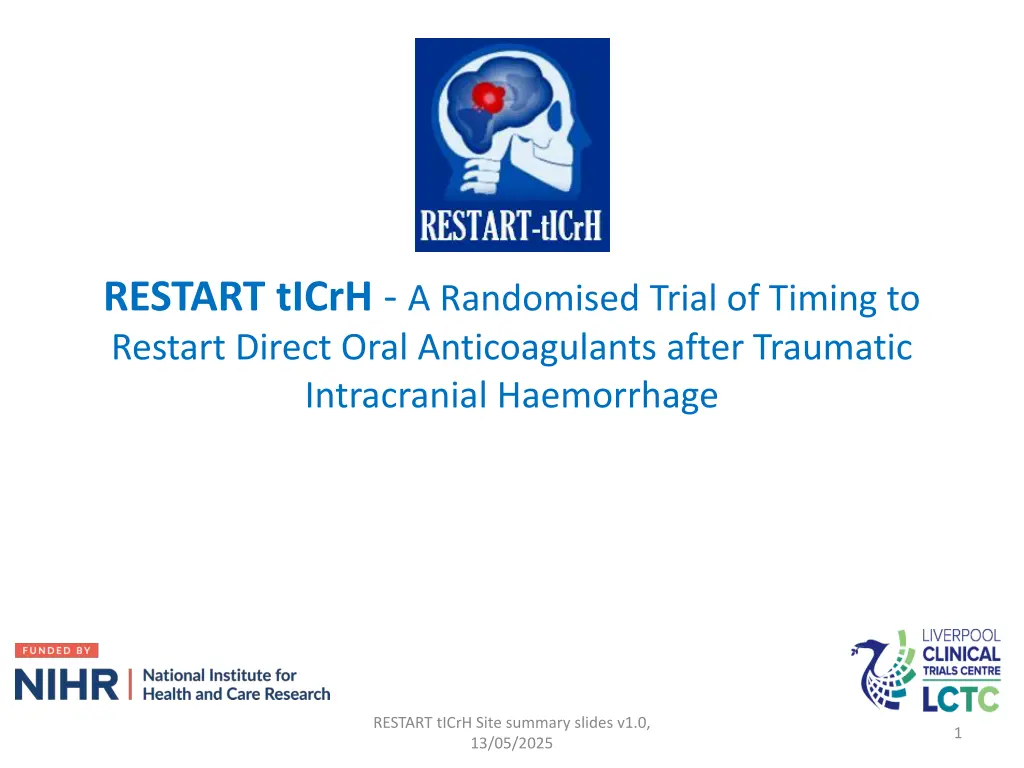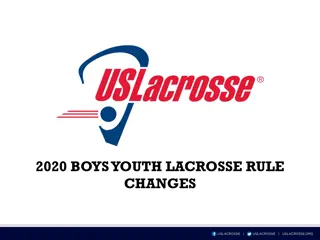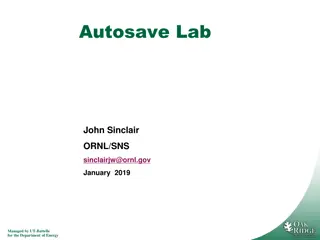
Trial on Restarting Oral Anticoagulants Post Traumatic Intracranial Hemorrhage
Investigate the optimal time to restart oral anticoagulants post traumatic intracranial hemorrhage in adults. The study compares restarting at 1 week versus 4 weeks to minimize adverse events. The trial design involves a randomized, open-label study with a recruitment target of 1084 participants across approximately 20 sites, spanning a 4-year period. Primary objectives include assessing the clinical effectiveness of early versus late restarting of direct oral anticoagulants following tICrH.
Download Presentation

Please find below an Image/Link to download the presentation.
The content on the website is provided AS IS for your information and personal use only. It may not be sold, licensed, or shared on other websites without obtaining consent from the author. If you encounter any issues during the download, it is possible that the publisher has removed the file from their server.
You are allowed to download the files provided on this website for personal or commercial use, subject to the condition that they are used lawfully. All files are the property of their respective owners.
The content on the website is provided AS IS for your information and personal use only. It may not be sold, licensed, or shared on other websites without obtaining consent from the author.
E N D
Presentation Transcript
RESTART tICrH - A Randomised Trial of Timing to Restart Direct Oral Anticoagulants after Traumatic Intracranial Haemorrhage RESTART tICrH Site summary slides v1.0, 13/05/2025 1
Background Head injury in older people falling from a standing height affects ~25000 per year in the UK. Approximately 17-35% are taking OACs. The decision to restart balances the risk of worsening tICrH versus stroke/thromboembolism. 1 month 5 days 3 days RESTART tICrH Site summary slides v1.0, 13/05/2025 2
Background Most studies look at spontaneous ICH very few on Traumatic intracranial haemorrhage Of those that are there, early recommencement around 1 week seems safe and better overall outcomes in relation to thrombosis and mortality. RESTART tICrH Site summary slides v1.0, 13/05/2025 3
UK Survey 62 UK Consultant Neurosurgeons. Majority recommend stopping OACS after TBI Most common time to re-start anti-thrombotic is 2 weeks in conservatively and surgically managed TBI 80% within 4 weeks Most surgeons (72%) would consider recommencement to be early if it is within 1 week and for late recommencement to be at four (39%) or six (31%) weeks. SBNS LIVE POLL 2021 confirmed acceptance of randomisation to 1 week and 4 weeks RESTART tICrH Site summary slides v1.0, 13/05/2025 4
RESTART tICrH In adults with a traumatic intracranial haemorrhage (tICrH) who are taking oral anticoagulants (OAC) when is the safest time to restart a direct oral anticoagulant (DOAC): early (1 week) or late (4 weeks)? We hypothesise that restarting DOACs after 1 week will present with a lower combined rate of haemorrhagic and thrombotic events than those who restart at 4 weeks. RESTART tICrH Site summary slides v1.0, 13/05/2025 5
Trial Design Randomised 2 Arms (restart at 1 week or 4 weeks) Open-label Total recruitment target - 1084 participants Number of recruiting sites Approx 20 planned Duration of participant follow up 26 weeks Duration of trial 4 years RESTART tICrH Site summary slides v1.0, 13/05/2025 6
Objectives Objectives: 1. To compare the clinical effectiveness of restarting/starting DOAC early (1 week) versus late (4 weeks) following tICrH. Primary objectives 2. To evaluate the safety of treating patients restarting/starting DOAC early (1 week) in comparison to late (4 weeks) To evaluate functional status and quality of life for patients restarting/starting DOAC early (1 week) in comparison to late (4 weeks) 3. Secondary objectives: 4. To determine patient/carer attitudes to restarting/starting DOAC post- tICrH 5. To estimate the cost-effectiveness of restarting/starting DOAC early (1 week) in comparison to late (4 weeks) Economic objective: RESTART tICrH Site summary slides v1.0, 13/05/2025 7
Outcomes Corresponding objective: Outcomes: 1. Proportion of patients with haemorrhagic or thrombotic event within 12 weeks following tICrH 1 Primary outcome: Secondary outcomes:2. Time to first haemorrhagic or thrombotic event 3. Time to first haemorrhagic event 4. Time to first thrombotic event 5. Time to death 6. Functional outcome measured using modified Rankin Scale (mRS), Barthel Index and extended Glasgow Outcome Scale (GOS-E) at 12 and 26 weeks 7. Quality of life measured with EQ-5D-5L at 6, 12 and 26 weeks 8. Patient and caregiver attitudes to recommencing DOAC following tICrH. Economic outcomes:9. Incremental cost per quality-adjusted life year (QALY) gained 1 1 1 2 3 5 4 5 RESTART tICrH Site summary slides v1.0, 13/05/2025 8
Eligibility Inclusion Criteria 1. Informed consent obtained from participant / participants legal representative and ability to comply with the requirements of the trial 2. Adult 18 years with traumatic intracranial haemorrhage (tICrH) in the past 1 week who were taking oral anticoagulants (OAC) prior to admission (Oral anticoagulants include any DOAC or Vitamin K antagonist (e.g. Warfarin), prescribed for atrial fibrillation (AF) or venous thromboembolism (VTE) prior to admission for tICrH) 3. At high risk for thromboembolic complications (CHA2DS2-VASc 2 in men and 3 in women) OR patients taking long term OAC for deep vein thrombosis (DVT) / pulmonary embolism (PE) All eligibility assessments must be reviewed, and full eligibility confirmed, by a qualified DOCTOR authorised to do so on the Delegation Log. This must be explicitly recorded in the medical notes prior to randomisation. RESTART tICrH Site summary slides v1.0, 13/05/2025 9
Eligibility Exclusion Criteria 1. Patients whose traumatic intracranial haemorrhage is a chronic subdural haematoma only 2. Patients with a mechanical heart valve 3. Patients with a plan to start/restart anti-platelet therapy within 12 weeks of tICrH 4. Abbreviated Injury Scale other than head with a score >3 5. Pregnant or nursing female 6. For participants of reproductive potential (males and females), not willing to use of a reliable means of contraception* 7. Participants with a hypersensitivity or contraindication to Direct Oral Anticoagulant (DOAC) as detailed in each IMP SmPC 8. Participant with bleeding where it would be unsafe to restart DOAC at 1 week 9. Participant with clinical reason to restart DOAC before 4 weeks or complete within 12 weeks 10. Concomitant p-gp and CYP3A4 inducers/inhibitors 11. Indication to stay on VKA (Warfarin) rather than switching to DOAC (e.g. severe renal impairment) All eligibility assessments must be reviewed, and full eligibility confirmed, by a qualified DOCTOR authorised to do so on the Delegation Log. This must be explicitly recorded in the medical notes prior to randomisation. RESTART tICrH Site summary slides v1.0, 13/05/2025 10
Patient sustaining head injury with traumatic intracranial haemorrhage (tlCrH) on CT scan. Eligibility confirmed, consent obtained. Baseline assessments including questionnaires completed pre- or post-randomisation (as indicated in section 10.4) Randomise Qualitative sub- study: semi- structured patient/caregiver interviews (n=14- 20) Arm 2 Arm 1 Start/Restart DOAC at 4 weeks Start/Restart DOAC at 1 week Intervention Schedule Participants reminded to start/restart DOAC at 1 week Participants reminded to start/restart DOAC at 4 weeks Follow up at 6 weeks (telephone consultation) Clinical / radiological evidence of haemorrhagic/thrombotic events Medication adherence check Survival status QOL and resource use questionnaires Follow up at 12 weeks Clinical / radiological evidence of haemorrhagic/thrombotic events Medication adherence check Functional Outcome, QoL and resource use questionnaires Survival status Follow up at 26 weeks Clinical / radiological evidence of haemorrhagic/thrombotic events Functional Outcome, QoL and resource use questionnaires Medication adherence check Survival status Assessment of Final Study Outcome Measures RESTART tICrH Site summary slides v1.0, 13/05/2025 11






















